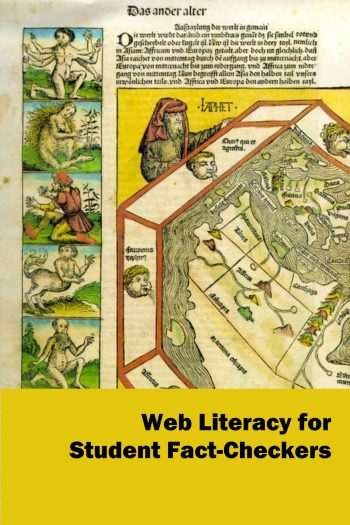"Four Moves" Method
- Check for previous work: Look around to see if someone else has already fact-checked the claim or provided a synthesis of research.
- Go upstream to the source: Go “upstream” to the source of the claim. Most web content is not original. Get to the original source to understand the trustworthiness of the information.
- Read laterally: Read laterally. Once you get to the source of a claim, read what other people say about the source (publication, author, etc.). The truth is in the network.
- Circle back: If you get lost, or hit dead ends, or find yourself going down an increasingly confusing rabbit hole, back up and start over knowing what you know now. You’re likely to take a more informed path with different search terms and better decisions.

Four Moves by Michael A. Caulfield is licensed under a Creative Commons Attribution 4.0 International License,
Evaluating Digital Sources Using Lateral Reading
To dig a little deeper into reading laterally from the SIFT method above, take the Evaluating Digital Sources Using Lateral Reading tutorial from Credo.
The CRAAP Test

The critical evaluation of information is an essential skill that can be used throughout your life. It involves a combination of common sense, knowledge, skepticism, and verification.With so much information available, in many different formats, and from many different sources, each piece of information that you select must be carefully reviewed or evaluated to ensure the quality, authority, perspective and balance that best supports your research. But what do you look for? It can be overwhelming.
The CRAAP Test is a set of five evaluation criteria and related questions to help guide thinking about whether a source is credible or not. CRAAP is an acronym for:
-
Currency
-
Relevance
-
Authority
-
Accuracy
-
Purpose
Publication Credibility
Not all sources of information are created equal. In addition to the reputation for reliability and impartiality, critical thinkers need to consider format. Online news sources can appear, at first glance, to be legitimate but it is quite simple to create a fake or untrustworthy online presence. Clues to authenticity include:
Publication Affiliations
 Purpose/Mission Statement
Purpose/Mission Statement
Author Credentials
Contact information
The absence of broken Links
Currency (Last updated)
Facebook is for Friends, Not for News
-
Facebook's Guide to Fake News-Be skeptical of headlines
-Look closely at the URL
-Watch for unusual formatting
-Consider the photos
-Inspect the dates
-Check the evidence
-Look at other reports
-Is the story a joke?
Web Literacy for Student Fact-Checkers
-
Literacy for Student Fact-Checkers
 By Mike Caulfield
By Mike Caulfield
A Glossary of Fake News- adapted from Oxford English Dictionaries
-
bias" Inclination or prejudice for or against one person or group, especially in a way considered to be unfair."
-
post-truth"Occurring after or resulting from a disclosure of the truth"
-
satire"The type of derisive humour or irony that is typical of a satire (cf. sense I.1a); mocking wit; sarcasm, esp. as employed against something perceived as foolish or immoral."
-
spin"Chiefly Politics. To give (an event) a particular emphasis or bias, esp. one that is favourable to a specific person or party; to put a spin on (a news story):`"
-
fake news"News that conveys or incorporates false, fabricated, or deliberately misleading information, or that is characterized as or accused of doing so."


